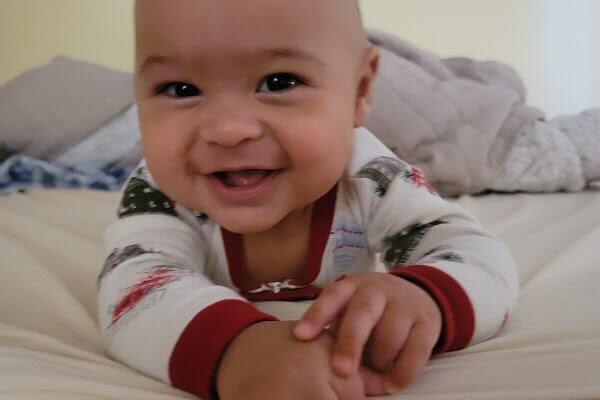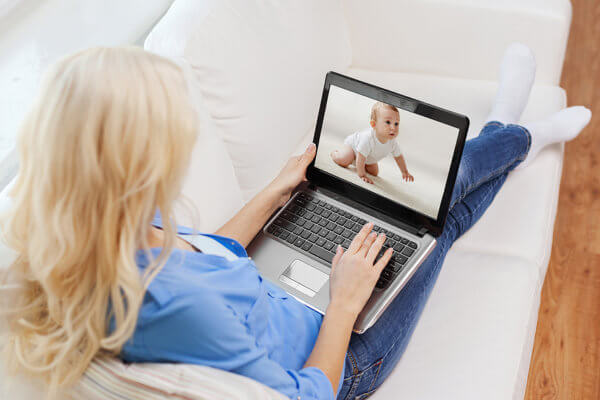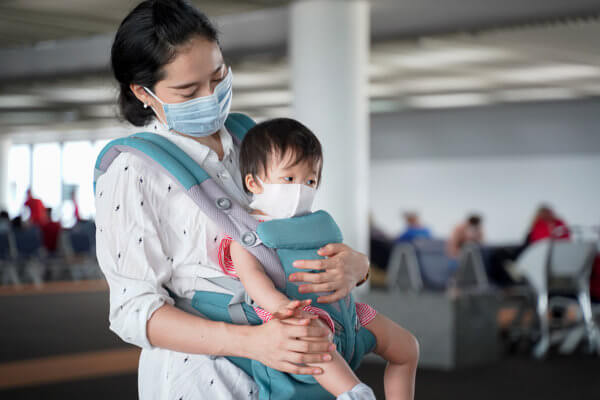By M. J. Horowitz
While nothing could be more relaxing and endearing than cuddling and cooing with your new baby, there are certain tasks that bring fear into the hearts of new parents. Both diapering and bathing are among them.
“Being a first-time parent, you are afraid you might injure or harm your baby due to your lack of experience. We have all walked in your shoes, and our children have all survived, despite us,” says Ari Brown, M.D., coauthor of Baby 411: Clear Answers & Smart Advice for Your Baby’s First Year (Windsor Peak Press, 2004) and a pediatrician in private practice in Austin, Texas. Relax.
With a bit of education and forethought, both bathing and diapering will be easy and fun bonding times with your baby.
Diapering 101
The rule of thumb is to change a baby’s diaper every few hours, or when it’s wet. So that’s about eight diapers or more a day, 56 a week…you get the picture. By the time your baby is a week old, you’ll be a pro. Here’s how to start:
Be organized.
Have everything—a diaper, wipes or washcloths, warm water, ointment, and a change of clothes—within reach. “Hypoallergenic, fragrance-free wipes are extremely gentle and okay for newborns,” says Anthony J. Mancini, M.D., associate professor of pediatric dermatology, Northwestern University Feinberg School of Medicine, Chicago. “But if your baby is prone to recurrent diaper rash, then water and a gentle cloth are better.”
Hold on.
Place the baby on the changing table or the floor, put your hand on her firmly, and don’t let go until you’re done. Talk to her in a calming voice.
Out with the old.
Lift the baby’s legs, take away the soiled diaper, and wipe front to back if she has had a bowel movement. “There is no need to wipe after a urine-only diaper,” says Mancini. (It’s a good idea to keep a boy’s penis covered with a washcloth as you remove the diaper and put on a fresh one.) Slide in a new diaper. Watch out for the umbilical cord—either use a newborn diaper with a cut-out notch for the cord area, or fold the diaper down—until the cord falls off at about two to four weeks.
{pagebreak}
Apply ointment, if necessary.
You can apply a barrier ointment at each changing, but if your baby hasn’t had diaper rash, then you may not need it. Fasten the diaper, making sure that it isn’t too tight. And what about that dreaded diaper rash? It isn’t a given that all babies will have it. “Obvious precautionary steps include changing diapers frequently to minimize the contact between moisture and skin,” says Mancini. And using barrier creams or ointments—zinc oxide- or petroleum-based products— helps to accomplish this as well.
Diaper dermatitis (rash) is caused by prolonged contact with urine and feces. If your baby does get a diaper rash, watch it closely. “If there are signs of an infection, such as pustules, whiteheads, drainage, crusting, or intense redness, then secondary yeast or bacterial infection may be present,” says Mancini. If the rash persists, a pediatrician should evaluate it.
Cloth vs. disposable
The decision about which kind of diaper to use is a very personal one. At one time, there were news stories about cloth being the more environmentally sound option. But now it looks like washing cloth diapers has as much environmental impact as disposing of throwaways.
According to the nonprofit Institute for Lifecycle Environmental Assessment, the decision comes down to your community’s situation— in a drought, use disposables; if there are landfill problems, use cloth. That’s the larger environmental impact. On a more personal level, cloth is definitely more natural, while disposables are more convenient. However, when it comes down to your baby’s comfort, Mancini says, “Cloth diapers are not as good as disposables in terms of diaper dermatitis prevention.
Disposable diapers contain absorbent gelling material, which is extremely effective in wicking moisture away from the skin. The incidence of severe diaper dermatitis seems to have fallen significantly since the advent of disposable diaper technology.”
{pagebreak}
Bathing for first-timers
Until your baby’s umbilical cord comes off, you can’t immerse her in water because it prevents the cord from drying and may increase the risk of infection. “To sponge-bathe, put your baby in a reclined position and rub warm,slightly soapy water on small areas, patting dry quickly. Many parents prefer an infant tub, but the kitchen sink works fine, too,” says Brown. Here is her step-by-step advice for that all important first bath:
Get ready in advance.
Set these items by the tub or sink: two baby towels, a washcloth, two bowls of warm water (one soapy, one not), a baby comb, shampoo, a fresh diaper, and a clean outfit. Before you begin, make sure to do the “elbow test” on the water—it should feel warm, not hot. Place a towel in the infant tub or sink (you won’t be filling it with water). Put your naked baby onto the towel in the tub/sink. Cover all body parts not being actively cleaned with the towel.
Keep baby comfortable.
Expose one body part at a time (face to toes) and wash with the washcloth that has been immersed in the soapy water bowl. For first-timers, just use water to wash the face. “Getting soap in your newborn’s eyes might be too traumatic for you,” warns Brown. Take the other baby towel and dry the area that has been cleaned. Move on to another body part and repeat the process.
Be thorough.
Get into the creases behind the ears, under the neck, and under the arms. Shampoo the hair and rinse with warm water. Dry the head quickly. To maneuver this, hold the baby’s head in the crook of your elbow and wash with your other hand.
If your baby has cradle cap (seborrhea), which is basically baby dandruff, massage oil—vegetable or baby oil will work—into the scalp and then wash. Rinse, and then comb out the flakes with a baby comb. Do this two to three times a week, and you should see an improvement. It eventually goes away on its own, but for a severe case, consult your doctor.
{pagebreak}
Dry and dress.
Move your baby from the towel that is sitting in the tub and then dry her completely with the other towel. Diaper and dress your baby. Clean up your mess later. Once your baby is older, you’ll start submerging her body in a bath. You can use a small infant tub that fits into the regular bathtub, or a rubber pad on the base of the tub to prevent slippage. The small tub may be easier for you at first.
Fill the tub with two inches of water that is warm and comfortable to the touch. Test it on yourself first. Immerse your baby in water that has already been drawn, keeping her face well above the water surface. (Don’t put her in while water is running when temperature can vary.) Have all supplies (soap, washcloth, shampoo, towel) ready so you never have to take your eyes off baby while she’s in the water. Hold the baby’s head for support while washing with your other hand—babies can drown in less than six inches of water.
Use a slightly soapy cloth to wash her face first and then her body. Make sure to clean the genitals with plain water, pouring over all the creases. For circumcised boys, be sure to clean the area between the head and the shaft as debris will collect there. Shampoo hair last.
When you rinse soap or shampoo from the head, make sure to cup your hand across baby’s forehead so that suds stay out of the eyes. “You don’t have to bathe your baby every night,” says Brown. “Every three to four days is fine, but some families do it more often because they like a bath as a winding-down ritual.
M. J. Horowitz, a writer in Pasadena, California, remembers bathtime fondly now that her children are teenagers.
Follow these guidelines and you’ll be diapering and bathing like a pro.



